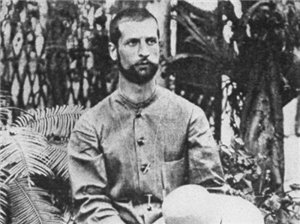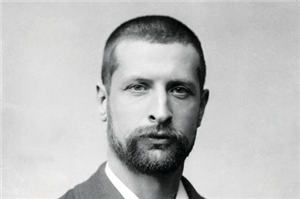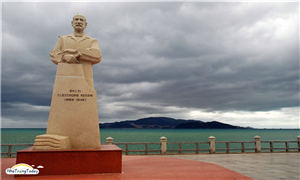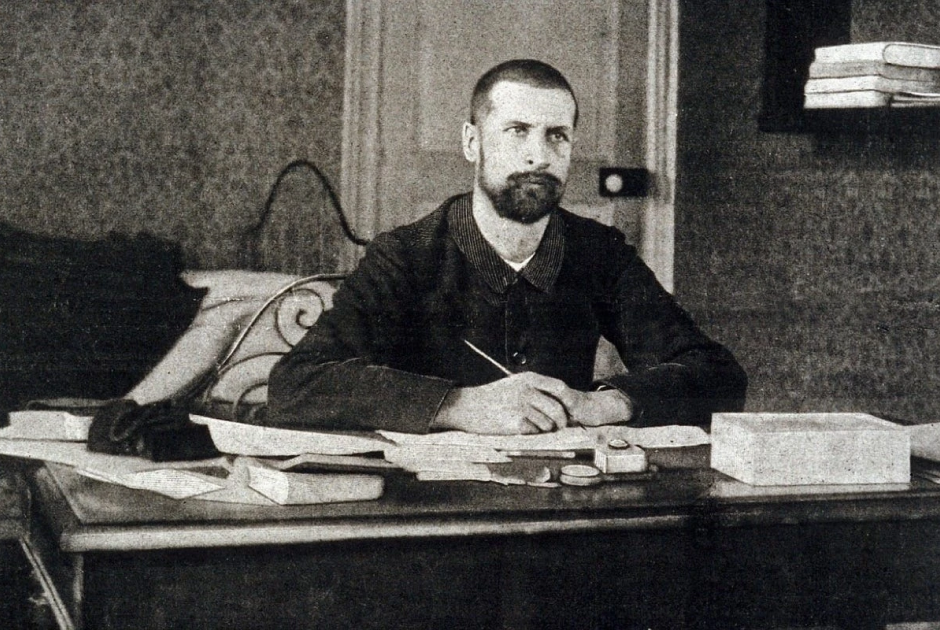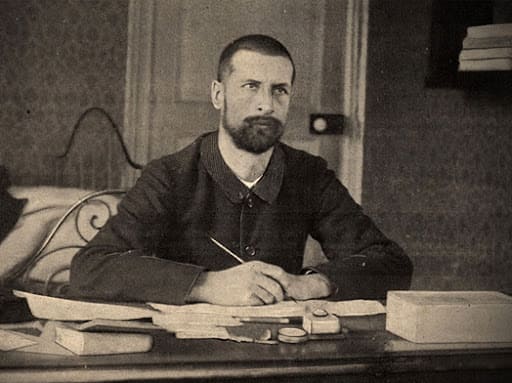“I always dreamt of exploration, of discovering new lands, exploring while young; one always imagines that strange things will come, nothing is impossible.”
After his journey in India, French Governor General Paul Doumer wanted to establish a resort for French expatriates similar to those in India. Yersin suggested choosing Dankia – located more than 10 km northwest of Dalat.

YERSIN’S LIFE STORY
On September 22, 1863, Alexandre Yersin was born in a mountainous region in Navanux – part of the Vaud canton – Switzerland.
In 1865, King Louis XIV revoked the Edict of Nantes, no longer ensuring equal treatment for Calvinist Protestants. Yersin’s ancestors were forced to leave their homeland in the Languedoc region (southern France) and migrate to Switzerland.
Yersin’s father was a biology teacher, and his mother hailed from Paris. Yersin was the youngest sibling in a family of two sisters.
With a modest and reserved nature, he spoke little about his childhood, so little is known about his early days.
At the age of 20 (1883), Yersin studied medicine in Lausanne (Switzerland). He then continued his studies in Marbuorg (Germany) and graduated from the University of Paris (France).
From 1886, he worked at the Pasteur Institute in Paris and collaborated with Dr. Roux in discovering the toxin of the diphtheria bacillus. In 1890, he obtained French citizenship.
During his years of dedicated research at the Pasteur Institute in Paris, he proved to be a rare genius, a person rich in determination and eager for learning. A bright future lay ahead of him. But Yersin turned his gaze towards new horizons, wanting to find a way out of his current life: “I always dreamt of exploration, of discovering new lands, exploring while young; one always imagines that strange things will come, nothing is impossible.”
Dr. Vallerey-Radot, the grandson of the renowned scientist Pasteur, remarked about Yersin: “From my grandfather’s house, I saw him looking at maps for hours.”
Then, Yersin unexpectedly left the field of bacteriology, became a sailor and explorer, embarking on a new life that lasted 50 years.
 a
a
JOURNEY TO VIETNAM
First, Yersin accepted the position of ship’s doctor for a shipping company bound for the Far East. After six months of operation on the Saigon – Manila route (Philippines), Yersin switched to work on the Saigon ship running from Saigon to Hai Phong and vice versa.
The first few months in the maritime profession were truly fascinating for Yersin! He had never been in contact with the sea before, but in his youth, Yersin was familiar with Lake Geneva. As the boat swayed on the open sea, Yersin looked up at the sky and learned how to determine coordinates. When the ship docked, Yersin apprenticed with an astronomer. In the years that followed, Yersin became passionate about astronomy and later studied atmospheric electricity and solar spectra.
When the ship sailed on the Hai Phong – Saigon route, as it approached the coastline, when it crossed the waves offshore, the majestic Truong Son Range to the west appeared before Yersin, evoking memories of his school days. On that day, Yersin climbed the slopes of Valais with his friends. The Truong Son Range may not have the same features and colors as the Alps, but it has its own strange allure. Yersin wanted to rediscover the sincere and familiar feelings of exploring mysteries, setting foot on unfamiliar land.
In July 1891, Yersin arrived in Nha Trang. He disembarked, traversed the coastal regions to Phan Rí, and followed the trails across a pass 1,200 meters high near Di Linh. From Di Linh, he planned to trek through the jungle to Saigon to find a road connecting Nha Trang to Saigon, but he missed the train to Hai Phong, so he gave up the journey, went down to Phan Thiet, and sailed by boat to Nha Trang.
This short initial exploration trip helped the 30-year-old explorer become acquainted with the difficulties in the mountainous regions of the tropics – with mountain winds, rainforests, enduring blood-sucking leeches, crossing streams flowing like waterfalls… The first encounter with the Central Highlands forests also sparked Yersin’s desire to undertake other explorations.
On March 29, 1892, from Nha Trang to Ninh Hoa, heading directly west towards Stung-treng on the Mekong River.
Thanks to the assistance of Pasteur and the French Minister of Education, in 1893, Yersin embarked on a mission to explore the mountainous regions lying between the Central Coast and the Mekong River, the upper reaches of the Dong Nai and Sebangcan rivers, which were previously little known. Leaving Saigon, he crossed the Trị An waterfall to Tanh Linh, crossed the La Ngà River to Di Linh. Following a trail similar to the current National Highway 20. On June 21, 1893, he reached the Prenn waterfall and then set foot on Lang Biang.
“On the way, the plateau rises and falls from 900 meters to 1200 meters over a distance of about 15 to 20 km before reaching the foot of the mountain. I stood on completely barren land with no trees or grass. The undulating hills made me feel like I was riding on a turbulent ocean with giant waves. Lang Biang Mountain stood tall in the middle like a moat island and seemed to be getting farther away as I approached. In the hollows, the soil was black and full of coal. Large herds of deer remained calm as we approached a few hundred meters. The deer ran away quickly and then turned back to look at us curiously.”
At the end of 1893, Yersin once again ascended to the Lang Biang Plateau, explored the Dak Lak Plateau – A Tô Pơ (Laos), and returned to Da Nang on May 7, 1894.
In 1890, Dr. Albert Calmette established a branch of the Pasteur Institute in Saigon. In 1894, a plague epidemic spread across eastern China. Dr. Calmette proposed that Yersin go to China to study the plague outbreak on-site.
On June 15, 1894, Yersin arrived in Hong Kong and met a rival – Dr. Kitasatô, who had arrived in Hong Kong three days before Yersin. This Japanese doctor was famous for his scientific work in discovering the bacillus causing dysentery. Yersin set up a tent next to the hospital and worked in difficult conditions. Just five days after starting work, on June 20, 1894, he discovered the plague bacillus. Through the British postal system, he sent the test tubes containing the plague bacillus to France. The plague bacillus reached Pasteur Institute in Paris intact and was verified, named Yersinia pestis.
In 1895, Yersin established the Pasteur Institute in Nha Trang and produced serum to treat the plague.
A year later, when the plague recurred in China, Yersin returned to China and saved many people from the deadly disease that had killed 50 million people in ancient times.
Yersin returned to Nha Trang, a new life began, many issues arose. Realizing that the city of Nha Trang was built on a white sand area not suitable for expanding pastures to raise horses for serum production, he explored the Suoi Dau area – 10 km south of Nha Trang, establishing a ranch and agricultural farm.
Following the example of his predecessors, he delved into researching serum therapy for plague in cattle. Since then, the Pasteur Institute in Nha Trang has researched animal and fish pathogens.
During a stopover in Malaysia and Indonesia, Yersin paid close attention to rubber cultivation. In 1897, he began planting rubber in Suoi Dau, and eight years later (1905), the Michelia Company (France) obtained the first 1,316 kg of rubber latex. Interested in the methods of planting, exploiting, and processing rubber, he established an agricultural laboratory. Here, systematic research on selecting varieties, tapping latex, and rubber coagulation methods has greatly assisted rubber growers in Indochina.
As time passed, the ranch and farm in Suoi Dau expanded, and Yersin assumed the position of director of the Pasteur Institutes in Saigon and Nha Trang.
From 1902 to 1903, he went to Hanoi to establish Yersin University of Indochina and served as its first principal.
In 1924, he held the position of General Inspector of the Pasteur Institutes in Indochina.
In 1933, he became the honorary director of the Pasteur Institute in Paris.
During his time living in Con Village (Nha Trang), he was a generous neighbor, often helping the elderly and fishermen, and showing affection for children. He lived very modestly, rich in compassion.
After his tour in India, French Resident General Paul Doumer wanted to build a resort for French expatriates similar to those in India. Yersin suggested choosing Dankia – located over 10 km northwest of Dalat.
In 1899, he accompanied Paul Doumer to Dalat. After observing the location, Paul Doumer did not choose Dankia as the resort site, but instead chose the current location of Dalat based on the recommendation of Dr. Emile Tardif because:
– Dalat is at a higher altitude than Dankia.
– The slope of Dalat is gentle, and its air is more hygienic compared to Dankia, with small hills separated by marshy valleys.
– The climate in Dalat is cooler and less humid than Dankia, which is closer to the Lang Biang summit, where moist winds are prevalent, resulting in more rain and dew (dew dissipates only around 10 a.m.).
– Regarding vegetation, Dankia only has small hills, while Dalat is close to pine forests, providing a cool and fragrant atmosphere.
– In terms of transportation, Dalat is more convenient than Dankia.
In 1914, World War I broke out. At that time, the Netherlands had a monopoly on producing quinine – the only medicine to treat malaria. Yersin planted Canh Ki Na seeds at Suoi Dau and Dankia. He failed completely at Suoi Dau, but Dankia required even more effort.
In 1917, Yersin planted Canh Ki Na trees at Hon Ba – a mountain near Suoi Dau. Initially, the trees grew well but later died due to unsuitable soil.
In July 1923, the best Canh Ki Na trees at Hon Ba were brought to Dran and yielded good results. He continued to plant them on the small Lang Biang Plateau and in Di Linh.
In 1936, Canh Ki Na trees were extensively planted in Lan Tranh and Di Linh, yielding 30 tons of bark with a Quinine Sulfate content of 7.42%.
In 1938, 21 tons of bark with a higher Quinine Sulfate content (8.5%) were harvested.
On June 28, 1935, Yersin High School was inaugurated in Dalat. Yersin returned to Dalat for the last time before his death. On this occasion, in response to the students’ speeches, he expressed his feelings when setting foot on the Lang Biang Plateau: “The cool air made me forget fatigue, and I recalled the joy of running up and down the hills like a young high school student.”
In his final years, Yersin remained passionate about scientific research – in astronomy and radio waves. A few weeks before his death, despite his illness worsening, he continued to monitor tidal levels.
On March 1, 1943, Yersin peacefully passed away at the age of 80, leaving deep condolences. Thousands of people in Nha Trang escorted his remains to his final resting place at Suoi Dau.
Arriving in Vietnam in the late 19th and early 20th centuries, Yersin worked within the colonial apparatus of the French regime. However, his diverse scientific contributions, simple life, compassion, and love for Vietnam continue to live on in the hearts and minds of the people of Dalat, Nha Trang, and across our planet. The capital Hanoi, Ho Chi Minh City, and Nha Trang have named streets after Yersin. In Dalat, the road leading to the former Yersin High School (now Dalat Pedagogical College) is named after the French scientist who bore the heavy burden of Vietnamese sentiments and left unforgettable memories in Dalat: Alexandre Yersin.
* 03 memorials dedicated to Dr. Alexandre Yersin:
– Yersin’s library at the Pasteur Institute in Nha Trang, Khanh Hoa province.
– Linh Son Pagoda, Suoi Cat commune, Dien Khanh district, Khanh Hoa province (former workplace of Dr. Yersin at Suoi Dau).
– Dr. Yersin’s grave, Suoi Cat commune, Dien Khanh district, Khanh Hoa province.
In 1891, he arrived in Nha Trang to establish the first bacteriological research and experimentation facility in Vietnam. By early 1899, this place had become the Pasteur Institute in Nha Trang.
After more than 50 years of living and working for science at the Pasteur Institute in Nha Trang (1891 – 1943), Yersin contributed 55 valuable research works to science.
The positions he held include:
– Director of the Pasteur Institute in Nha Trang.
– Director of the Pasteur Institute in Indochina.
– Principal of the Hanoi Medical University.
– Inspector General of the Pasteur Institutes in Indochina.
– Member of the French Academy of Sciences.
– Honorary Chairman of the Medical Council of the Pasteur Institute in Paris.

